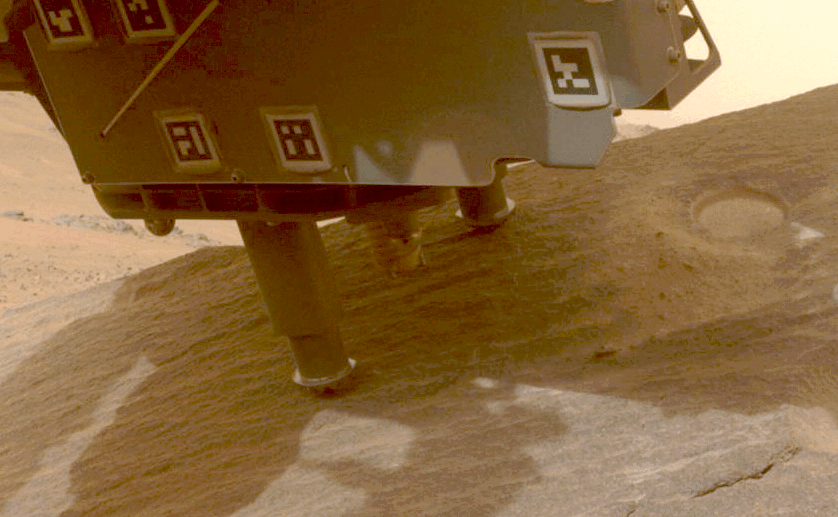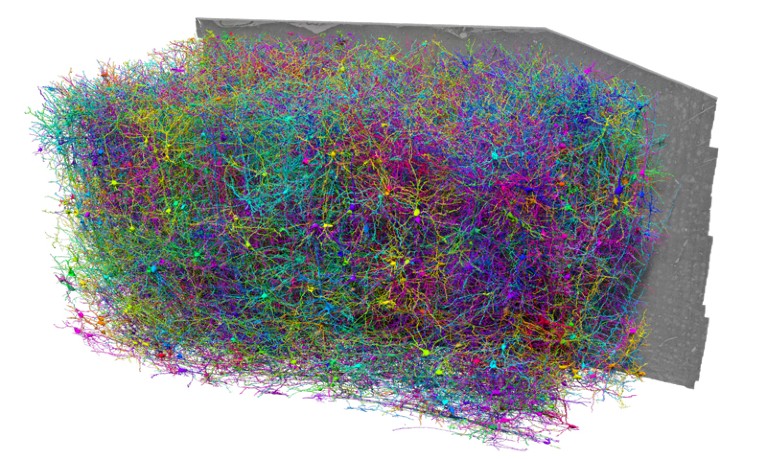[ad_1]
Hello Nature readers, would you like to get this Briefing in your inbox free every day? Sign up here.

NASA’s Perseverance rover collects a sample from a Martian rock using a drill bit on the end of its robotic arm.Credit: NASA/JPL-Caltech
NASA is seeking fresh ideas for delivering Mars rocks collected by the Perseverance rover to Earth. With its up to US$11 billion price tag, the current plan is “too expensive” and its schedule is “unacceptable”, said NASA administrator Bill Nelson. In the agency’s original vision, a spacecraft would carry a lander and a rocket to Mars. The rocket would launch the lander plus samples into Martian orbit, where they would meet another spacecraft that would then return the samples to Earth.
With average global sea surface temperatures breaking records every day for more than a year, corals have been pushed into the fourth planet-wide mass bleaching event. Over the past year, more than half of ocean waters home to coral reefs have experienced heat stress high enough to cause bleaching, in which coral turn white and sometimes die. And that number is increasing every week, says ecologist Derek Manzello, head of the US National Oceanic and Atmospheric Administration’s Coral Reef Watch program. Within a week or two, “this event is likely to be the most spatially extensive global bleaching event on record”.
The New York Times | 6 min read
Artificial intelligence (AI) systems can now nearly match — and sometimes exceed — human performance in tasks such as reading comprehension, image classification and mathematics. “The pace of gain has been startlingly rapid,” says social scientist Nestor Maslej, editor-in-chief of the annual AI Index. The report calls for new benchmarks to assess algorithms’ capabilities and highlights the need for a consensus on what ethical AI models would look like.
Reference: 2024 AI Index report
Researchers have identified three new giant kangaroo species that lived around 5 million to 40,000 years ago. One of them, Protemnodon viator, weighed up to 170 kilograms — about twice as much as the largest living kangaroos. While most Protemnodon species were thought to move on four legs, viator had long limbs and could probably hop long distances. “People often think we have a pretty weird modern ecosystem in Australia … but our animals are comparatively non-freaky compared to things we used to have in the past,” says palaeontologist Gilbert Price.

A near-complete fossil skeleton of the extinct giant kangaroo Protemnodon viator from Lake Callabonna, missing just a few bones from the hand, foot and tail (Flinders University).
Features & opinion
Many clinicians think that people who take obesity drugs such as semaglutide (sold as Wegovy and Ozempic) should take them for life. But the medications’ cost, brutal side effects and many other factors can force people off them. Those who quit usually regain a substantial amount of body weight, and often see a rebound in negative health effects such as high blood pressure, and increased blood glucose and cholesterol levels. So much work has gone into developing the drugs, says clinician-scientist Jamy Ard, “we need just as much — if not more — work to be done on what happens after people reach that goal in that weight-reduced state for the rest of their lives”.
Researchers often have to rely on rumours when deciding how to interact with a peer accused of harassment or bullying. Closed misconduct investigations ensure privacy — both for the accused and the accusers — but can also mean that harassers can continue their behaviour by simply moving institutions. Many advocate for semi-transparency, for example an information-sharing scheme for employers or institutions reporting anonymized misconduct statistics. Proactive policies are needed, such as conference codes of conduct, says astrophysicist Emma Chapman, who campaigned to ban non-disclosure agreements in disciplinary processes. “There is no easy answer, but that doesn’t mean that we default to having no answer,” she says.
Researchers have mapped the tens of thousands of cells and connections between them in one cubic millimetre of the mouse brain. The project, which took US$100 million and years of effort by more than 100 scientists, is a milestone of ‘connectomics’, which aims to chart the circuits that coordinate the organ’s many functions. Identifying the brain’s architectural principles could one day guide the development of artificial neural networks. Teams are now working on mapping larger areas, although a whole-brain reconstruction “may be a ‘Mars shot’ — it’s really much harder than going to the Moon”, says connectomics pioneer Jeff Lichtman.

A network of thousands of individual neurons from a small subset of cells in the Machine Intelligence from Cortical Networks project data set.Credit: MICrONS Explorer
Today, I’m considering ten of the more unconventional reasons for publishing a paper, including ‘symbolic immortality’ and revenge. The authors, career researcher William Donald and organizational psychologist Nicholas Duck, explain that their paper fulfils their own unconventional motivation: creating the citation “Donald and Duck (2024)”.
Please tell me about your unusual motivation for research — alongside any feedback on this newsletter — by sending an email to [email protected].
Thanks for reading,
Katrina Krämer, associate editor, Nature Briefing
With contributions by Flora Graham, Smriti Mallapaty and Sarah Tomlin
Want more? Sign up to our other free Nature Briefing newsletters:
• Nature Briefing: Anthropocene — climate change, biodiversity, sustainability and geoengineering
• Nature Briefing: AI & Robotics — 100% written by humans, of course
• Nature Briefing: Cancer — a weekly newsletter written with cancer researchers in mind
• Nature Briefing: Translational Research covers biotechnology, drug discovery and pharma
[ad_2]
Source Article Link

